Found from Busselton to Coral Bay usually, slow-growing baldchin groper are a favourite with shore and boat anglers in WA and are a fascinating fish, writes Western Angler editor Scott Coghlan in this week’s edition of Scott’s Species.
Continue reading “Scott’s Species – baldchin groper, bullocking beasts with protruding teeth”
Tag: Western Angler
Scott’s Species – tailor, tough predators with razor teeth
From beaches, to rivers and estuaries, tailor are a special species that many WA fishers value dearly, especially for those based along the State’s west coast. In this week’s edition of Scott’s Species, Western Angler editor Scott Coghlan writes about the favourite near-shore species with razor teeth.
Species: Tailor, Pomatomus saltatrix
Eating: 3 stars
ID: Blue-green back and silver underside, the first of their two dorsal fins has many small spines, and strong lower jaw with numerous small teeth.

A popular recreational fishing species globally, tailor are primarily an inshore species and are found from Exmouth in WA across the southern side of the country and into lower Queensland on the east coast.
Known as bluefish in the United States, they are an ultra-aggressive opportunistic predator that often travels in schools and a long-time favourite with Australian anglers, especially from the shore.
They grow to 14kg, but fish of that size are very rare in WA and any tailor above 3kg is a ripper.
At the bigger sizes they are known as ‘jumbos’ or ‘green backs’ and 20lb (just over 9kg) has long been the benchmark for a true trophy tailor, while smaller fish are known as choppers.
Recently, a 12.8kg fish was caught in Wilson Inlet by a commercial fisherman. That would have eclipsed the State line caught record from near Steep Point back in 1981.

There are certainly some big tailor around Shark Bay and there have been big ones caught around the salt ponds in that area. These fish are not as strong and powerful as ocean fish though.
Dirk Hartog Island is a haunt for giant tailor as are the cliffs near Steep Point. The biggest fish I have seen caught was taken near Steep Point while spinning for pelagics.
Around the Murchison River mouth in Kalbarri is another noted big tailor spot.
Like the Denmark fish mentioned earlier, big tailor also get taken quite regularly along the south coast.
I pulled a jumbo out of a school of salmon on a popper, much to my surprise, east of Esperance many years ago.
Tailor favour periods of low light for hunting their prey and as such dawn and dusk are peak times for catching them.
They will bite at other times of the day, but they are generally most active at sunrise and sunset.

A bit of chop on the water is generally preferable to totally calm conditions, and for metro beaches the arrival of the afternoon sea breeze in summer can be the start of the chopper tailor bite.
They are often found around reefs, where they ambush predators among the chaos of the white water, taking opportunities to feed as they present.
Tailor can be caught from beaches and shore reefs, and also can be found along offshore reefs that feature breaking waves.
Chopper tailor are also caught in big numbers in estuaries and rivers, including the Swan River.
Tailor are generally a light tackle proposition and casting outfits of 4-6kg will do the job, although you may need to upgrade to 10kg-15kg gear for chasing true jumbos.
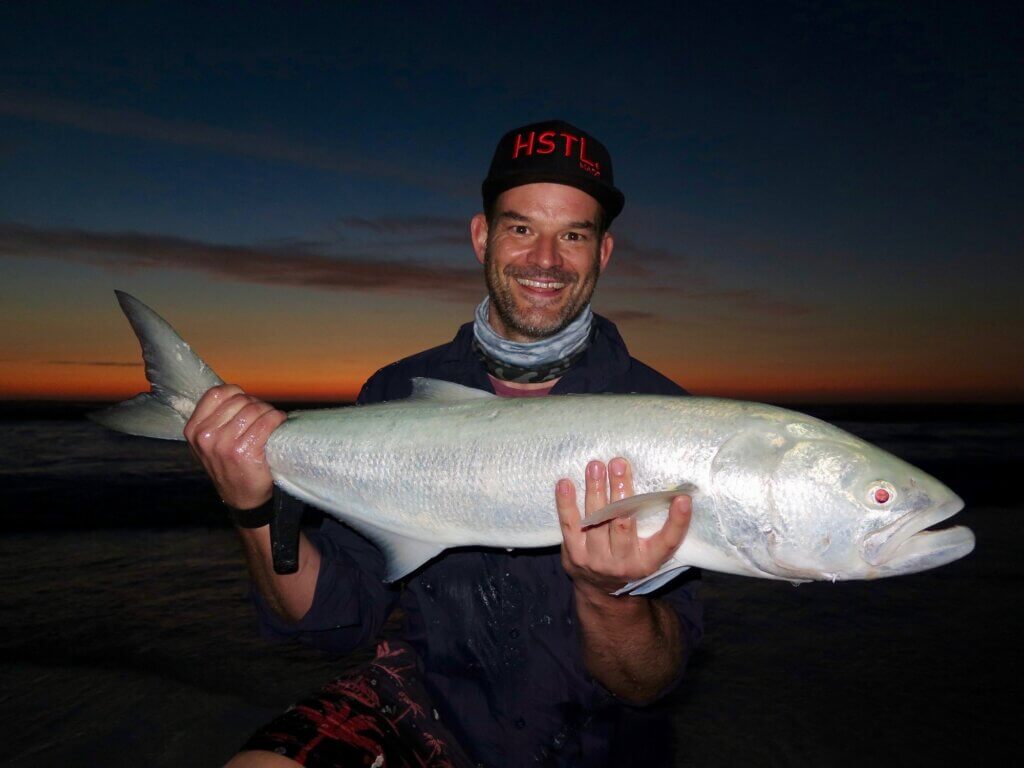
Their sharp teeth means a small length of heavy leader, or even wire, is a good idea to prevent bite-offs and they will happily take baits such as whole of half mulies, whole whitebait, strips of mullet or whole bluebait.
An appropriately sized set of gang hooks should be used to match the bait. Use as much weight as is necessary to get the bait to the fish.
From the beach this could mean a large star or spoon sinker, while from a boat around reef it may mean an unweighted rig.
Big tailor experts like baitcasting whole garfish. They are willing lure takers and will hit metals, minnow lures, stickbaits and poppers with incredible gusto.
They put up a good fight, often jumping when hooked, and usually fight clean, even in reefy areas.
They should be bled immediately after capture if they are to be eaten, and should always be eaten fresh as tailor flesh does not freeze well.

Scott’s Species – giant herring, stunning slender silver speedsters
Slender, silver, speed machines! Giant herring are without doubt an awesome sportfish to target, writes Western Angler editor Scott Coghlan in this week’s Scott’s Species.
Species: Giant Herring, Elops machnata
Eating: 1 star
ID: Long slender body, prominent dorsal fin, bony mouth and large forked tail.
Giant herring are found from Albany on the south coast of WA all the way around to the top of the State.

They are not a common catch on the south coast, but there are often reasonable numbers in the Nornalup Inlet.
They become more prevalent along the west coast, with good numbers in the Collie River and Leschenault Estuary at times, as well as in the Swan River most years these days.
Chasing them in the Swan in summer has become a popular pastime for light tackle sport fishers in recent years, but finding them can be challenging. At times they are everywhere and the action is insane for a metro river, but then they can be almost impossible to find at other times.
When they are around and on the bite, the big boils, bow waves, explosive strikes and stunning leaps make for an unforgettable Swan fishing experience.
For many years they seemed to vanish from the Swan system, but the last decade has seen them return strongly and in some surprisingly good sizes.
Flats are a good area to seek them out in the Swan, especially if there is a sizable drop-off nearby. We used to do well around Burswood for many years and Claremont has been another hot spot at times.
WATCH: Fishing the Swan River for giant herring
The best giant herring we have encountered have been in Exmouth Gulf, where we have caught fish to 1.2m from our kayaks. At that size they are a real trophy catch and I’ll never forget seeing my first 1m-plus giant pop up next to the kayak after hooking it trolling.
Unlike most giant herring it never jumped so I had no idea what it was until I saw it. That made me nervous as I had never caught a big one before.
Big GHs like this often show up in the Gulf. Usually an estuarine fish, they can also be found in freshwater billabongs in the northern half of the country.
Although they grow to more than 10kg and more than 1m in length, most giant herring caught are much smaller than this and any fish measuring more than 60cm is a good one, especially at the southern end of their distribution.
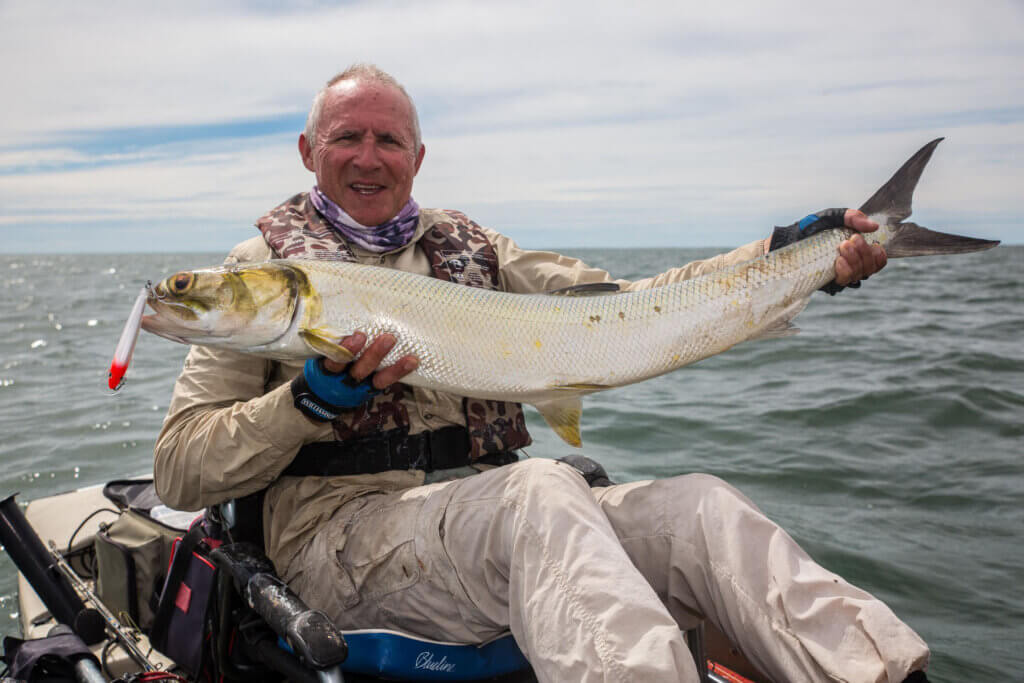
They are often found in small schools and many anglers believe they fish best when there is some chop on the water.
GHs are poor eating, but these fish are amazing fighters and offer a massive challenge on light gear. Although they are not that hard to hook initially, keeping them connected is another matter altogether.
Their bony mouths and violent head-shaking leaps throw the hooks most of the time, leaving the angler with nothing but a memory of the brief encounter.
They also have small raspy teeth that will quickly wear through thin leader. A mainline of 4kg-6kg braid or mono should be sufficient for all but the biggest fish, and mono actually offers the advantage of offering more give during the fight.
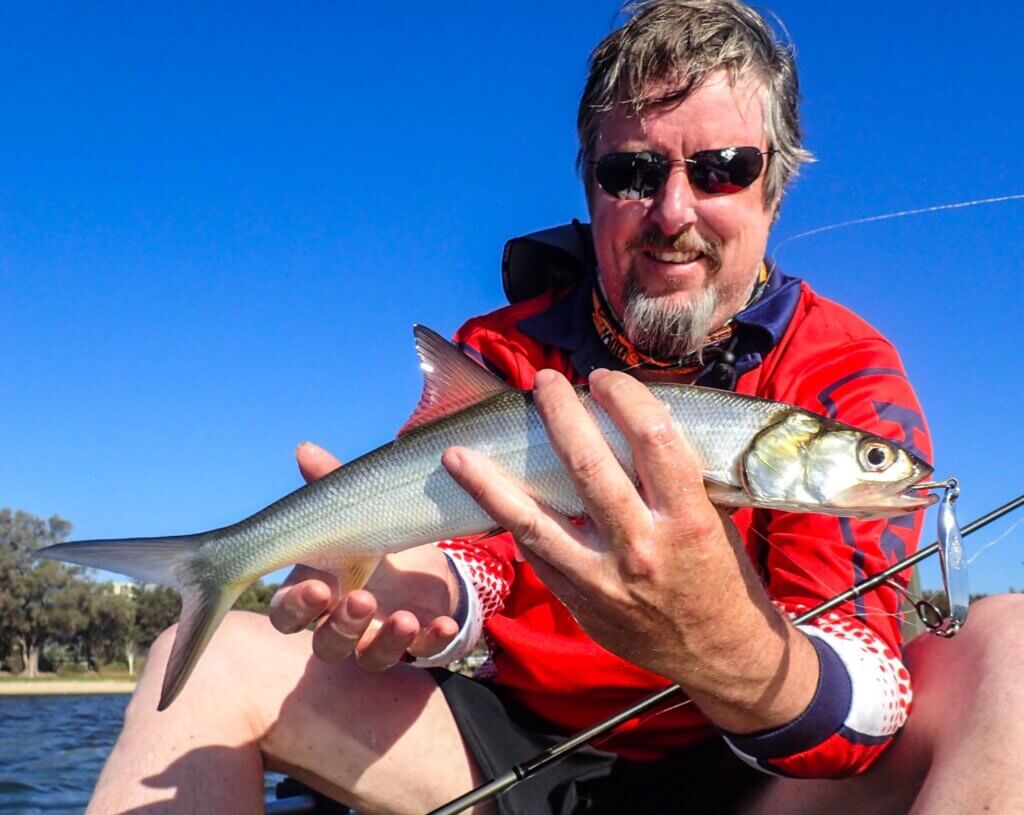
Fluorocarbon leader of around 9kg is needed. There are a numbers of lures that can be used for giant herring, including bibbed minnows from 6cm-12cm in length, poppers, stickbaits, metal slices and soft plastics.
Giant herring often respond best to a fast retrieve and casting metal slices long distances and winding them back at full speed can be a good way to seek out fish.
Bear in mind that the heavier the lure, the easier it is for the giant herring to dislodge it during the fight. Replacing the trebles with assist hooks is worth considering if giant herring are being sought.
They are a favourite of fly anglers and an eight-weight outfit would be sufficient for all but the biggest fish.
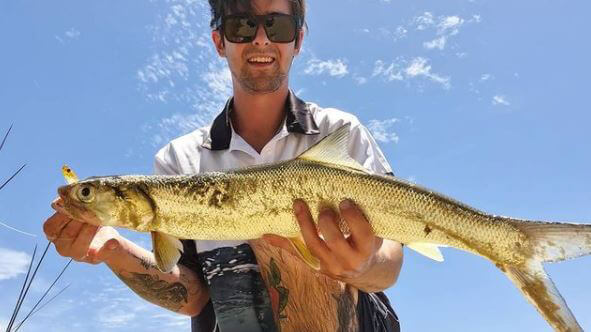
Scott’s Species – dogtooth tuna, a bucket list pelagic
Dogtooth, or doggies as many anglers call them, are one of the most prized gamefish in the world, writes Western Angler editor Scott Coghlan. For many fishos, myself included, doggies are a bucket list capture. Read more about the formidable pelagic species that have fearsome teeth in this week’s edition of Scott’s Species.
Species: Dogtooth tuna, Gymnosarda unicolour
Eating: 3 stars
ID: Prominent lateral line, large teeth.
With a large eye suited to hunting squid and fish in deep water, doggies are usually found around underwater structure such as reefs, drop-offs and ridges.

Sadly for doggie hunters they aren’t common in WA and only a few locations, generally very remote, produce them.
The odd dogtooth gets taken near the Montebellos at the spot called Rankin Bank. Aside from that, you are looking at spots like the Rowley Shoals and Scott Reef.
I’ve fished the Rowley Shoals a couple of times and we’ve only caught a handful of doggies in small sizes.
Some other big hook-ups have suggested doggies, but have ended in tears, and getting them past the sharks is a major problem. Certainly others have had success on them at the Rowleys.
Some of the crew we were with went diving and spotted them right beneath our boat, while the late Hal Harvey picked up a good one from the back of the boat at anchor.
I haven’t fished Scott Reef but it is known to produce good dogtooth, with sharks less of a problem than at the Rowleys.
The other ‘West Aussie’ option for dogtooth are the Indian Ocean Territories of the Christmas and Cocos islands.

In the current COVID-19 pandemic environment they offer the most accessible ‘overseas’ fishing trips for West Aussies and both hold good populations of dogtooth tuna.
Doggies love to lurk in areas when there is a sudden drop into deep water and both of these locations offer this. I picked up a solid doggie of around 35kg on a surface stickbait at Cocos earlier this year, while casting for giant trevally.
Although we were only fishing in 10m of water, as soon as I hooked it in a big surface strike at the boat the fish headed back over the drop-off and into the depths.
Underwater peaks in very deep water are also noted for producing doggies. The first place I encountered them was in Vanuatu and the biggest one I have seen caught was around 75kg and taken jigging in Fiji.

Dogtooth grow to more than 130kg and 1.5m in length and their combination of speed and stamina makes them a favourite with heavy tackle game and sport fishers, although they are also prone to overfishing and can be tough to release as they have a habit of fighting themselves to the point of total exhaustion when hooked.
The handful I have caught have all come to the surface belly up with barely a flicker of life left in them. When hooked they have enormous power and will usually head straight for bottom structure and even smallish fish will test gear and angler, with most dogtooth caught under 40kg.
Doggies will hit a wide range of lures, with metal jigs probably the most popular method because of the depths they tend to frequent. Trolled minnow lures and skirted lures will also work.
As I found at Cocos, at times they will move up in the water column to take poppers and stickbaits, making for very exciting fishing.
Serious game fishing gear is needed, with quality spinning or overhead reels spooled with line of at least 37kg in strength recommended. Dogtooth are rarely an accidental capture and are usually caught by anglers specifically targeting them.

Scott’s Species – barracuda, a fish not sought by many
This species shares its first five letters with the world-renowned barramundi. However, this ‘barra’, the barracuda, doesn’t share the same reputation among the fishing community. Read Western Angler editor Scott Coghlan’s latest edition of Scott’s Species below.
Species: Barracuda, Sphyraena barracuda
Eating: 3 stars
ID: Silver sides, grey bands along side, large teeth.
I have to say ‘cuda are one of the fish I try to avoid like the plague.

Indeed on our annual kayak trip to Wilderness Island they are one of only two species that earn points towards the wearing of the dreaded pink dress at the end of the week. And they seem to find me!
I’m not sure where my irrational dislike of barracuda came from, but possibly it was when I had a fishing companion explain that he lost an eye to one when an unhooking went wrong and the fish latched onto his face.
I reckon there are only two fish that actually try to bite you and they are ‘cuda and long toms. As such I dislike both quite a deal.
When you try to unhook them you can see their beady eyes watching every move, just waiting for an opportunity to sink their teeth into human flesh.
They also aren’t great fighters on the end of a line either, even at the huge sizes like the one Rex Hunt famously caught one day off a sand cay on his show.
WATCH: Legendary fisher Rex Hunt lands a big ‘cuda
You can imagine my disappointment at Cocos Islands earlier this year when I had a GT popper monstered with a big flash of silver after hours of unrewarded casting, only to have a dirty great ‘cuda reveal itself as the protagonist.
Fortunately, the hooks pulled before I had to deal with it.
Although there are actually several species of ‘cuda in Australian waters, the great barracuda is the most commonly encountered and are sometimes found from the South West of WA, but mainly from north of the Abrolhos, all the way north and across to lower Queensland.
Barracuda are a fearsome looking fish with their sharp teeth and are extremely aggressive, in and out of the water.
At their upper size of around 2m in length and 40kg in weight, they are best handled extremely carefully, as I’ve alluded to already.
Barracuda often travel in large schools and when they turn up, it can be best to move to a new area if you are chasing other species as they are voracious feeders.
They will hit any lure or bait and will bite through line if wire is not used. Although they hit often give up quite quickly they will sometimes jump in an attempt to throw the hooks.
While they are often used for food in areas like the Pacific, barracuda are not a popular eating fish in Australia.
They have soft flesh and are best consumed fresh. They can also be prone to ciguatera elsewhere, but not in WA waters.

Scott’s Species – Samson fish, a powerful sportfishing opponent
Once the bane of anglers chasing better quality eating fish for the table, Samson fish became the basis of a thriving sportfishery here in WA, writes Western Angler editor Scott Coghlan in this week’s edition of Scott’s Species. Continue reading “Scott’s Species – Samson fish, a powerful sportfishing opponent”
Scott’s Species – sooty grunter, a small yet tough foe
While Scott Coghlan has not spent much time fishing for sooty grunter, they’re a hard-fighting fish which definitely has him hooked! In this week’s edition of Scott’s Species, published exclusively on the Recfishwest website, the Western Angler editor discusses the brute freshwater fish.
Fish: Sooty grunter, Hepheastus fuliginosus
Eating: 2 stars
A freshwater species that is often called bream in the northern parts of the country, sooty grunter are found from the Kimberley across to Queensland, in a wide range of environments, and grow to around 50cm and 4kg.

They offer a similar angling challenge to the southern black bream and a 30cm-plus fish would be considered a great catch as they fight hard for their size.
Some of the best sooty grunter fishing in Australia is in man-made impoundments and that includes Lake Kununurra in the East Kimberley.
In the lake, they can be found around structure as the waterway narrows upstream of Kununurra.
In the lake or other Kimberley locations such as freshwater rivers, casting around snags and cover is a good way to find them.
Their diet includes insects, small fish, worms and freshwater prawns, and sometimes even algae.

Sooty grunter love underwater cover, from which they will dart out to grab food. They also like areas well-shaded by overhanging trees.
Baits such as cherabin, shrimp and worms will work, but they are a fun species to chase on lures.
They will readily hit soft plastics, minnow lures 7cm to 10cm long and flies.
A 3kg-5kg spinning outfit will usually be sufficient, but heavier leader is needed.
My sooty experience is limited but I enjoyed chasing them in Lake Kununurra, using a similar approach as for bream on the south coast, by working along the shoreline and casting into the bank.
I have also caught them in the freshwater sections of a few rivers. They don’t have the glamour, or size, of barramundi, but sooties can be a lot of fun on light tackle and have a special place in the heart of many Kimberley anglers.
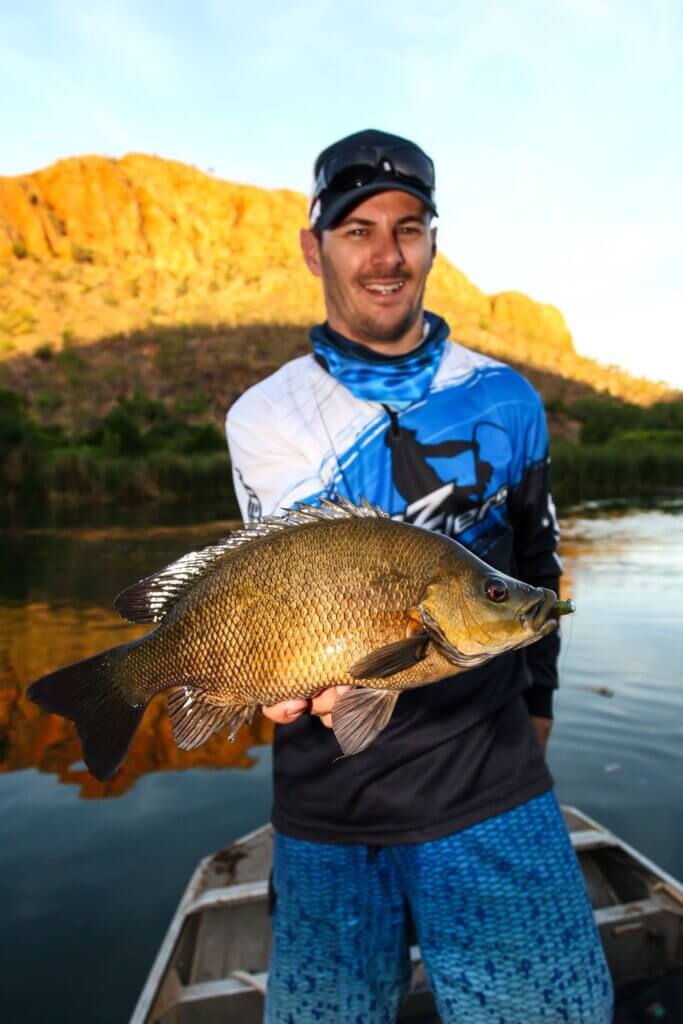
Scott’s Species – southern bluefin tuna, a migratory speedster
In this week’s edition of Scott’s Species, Western Angler editor Scott Coghlan takes an in-depth look at southern bluefin tuna.
Fish: Southern bluefin tuna, Thunnus maccoyii
Eating: 4 stars
Identification: Yellow bar on tail fin. Blackish-blue backs, and a silver belly with rows of light dots and lines.
Growing to almost 300kg and 2.5m in length (living up to 40 years) but not encountered at anything like that upper size in WA, southern bluefin tuna have made a remarkable comeback in Australian waters in recent years and become a key sportfish, especially along the lower east coast.
Big fish to 100kg are popping up far more regularly and there are now a band of SBT addicts that devote their time to chasing the big fish during the annual east coast run, off Victoria, NSW and Tasmania.

Highly migratory, southern bluefin tuna can be found from our North West and across the southern half of the country to lower New South Wales.
Here in WA, we usually get small fish migrating from where they were spawned in the north-east Indian Ocean and making their way across to the east coast.
Most southern blues caught in WA will be 3kg to 8kg, although fish to 20kg are not uncommon and the occasional bigger model up to 100kg does show up, but again nothing like the east coast thumpers.
Southern blues show up off Perth in good numbers most years, and schools can be found quite regularly offshore, especially during the warmer months.
They are also a common catch along the south coast, with fish caught off Albany and Esperance at the same time of year.
For boat anglers, southern bluefin are usually caught trolling, either by working likely locations or by spotting fish busting up.
Bibbed minnows around the 12cm to 14cm range are very effective on southern bluefin, as are skirted lures, and when encountered, multiple hook-ups are common.
They are a ball of muscle and fight hard for their size, with speedy runs and that typically stubborn tuna circling when close to the boat.
SBTs fight clean so heavy tackle is not required if you are prepared to be patient and indeed they can be an excellent sportfishing target on the right gear.
I would only use 6kg to 9kg line when chasing southern blues and no wire trace is needed, just a heavier shock leader.
If they are around and you specifically want to target them, then burleying up does work. Their flesh makes first-rate sashimi.

Scott’s Species – dhufish, a WA fishing icon
The mighty dhufish. They’re WA’s most iconic fish for a myriad of reasons, writes Western Angler editor Scott Coghlan in this week’s exclusive edition of Scott’s Species. Continue reading “Scott’s Species – dhufish, a WA fishing icon”
Scott’s Species – barramundi, a wonderful estuarine and inshore sportfish
Barramundi are an iconic species of northern Australian waters, encountered from Exmouth north. An estuarine and inshore species that can survive in both freshwater and saltwater, all barramundi begin life as males and become females as they mature, writes Western Angler editor Scott Coghlan in the latest edition of Scott’s Species.
Species: Barramundi, Lates calcarifer
Eating: 4 stars
ID: Concave head, silver sides, large paddle tail.

A barramundi exceeding 40kg has been caught from Lake Tinaroo in Queensland. However, they are generally measured by their length and a trophy barramundi is anything over the magical 1m mark.
Barramundi are normally encountered in the tidal rivers in WA’s north, but can also be found in freshwater billabongs, and are a prized catch on lure or bait.
Prime time for barra is just before or after the wet season, when they are more active in the warm water.
Many anglers fish for barra on dropping tides, as these concentrate the bait and therefore identify areas likely to produce fish.
Dead baits are good when it comes to tempting barra, but are prone to being taken other less desirable species like catfish.
Lures are effective, especially when fished around structure as barra love to sit close to rock or timber snags and ambush prey.

Minnow lures work well, cast or trolled, and soft plastics and vibes dropped around snags can also be very productive.
Barra will often follow lures for quite some time before striking and it pays to work lures slow and erratically.
At night, slowly working ‘fizzers’ along the surface can be very exciting as the barra will crash the lure without warning in the darkness.
Likewise, surface poppers can also work very well at times and the thrill of the strike is special.
Once hooked, barramundi will take to the air repeatedly and put on a spectacular show.
Tackle does not need to be heavy for barramundi, with 7kg-10kg line usually sufficient, but a stronger leader needed.

Many anglers prefer baitcasting outfits to spinning tackle, because of the increased accuracy of casting.
Impoundment fishing for monster barra is popular on the east coast and could soon take off in WA.
Lake Kununurra, originally part of the Ord River, has been heavily restocked with barra in recent years in a project supported by the Lake Kununurra Barramundi Stocking Group, Department of Primary Industries and Regional Development, North Regional TAFE — Broome and Recfishwest.
Now, many of these fish are measuring more than 1m.
There have been a number of big fish caught in the lake and this fishery should only continue to improve in the coming years.
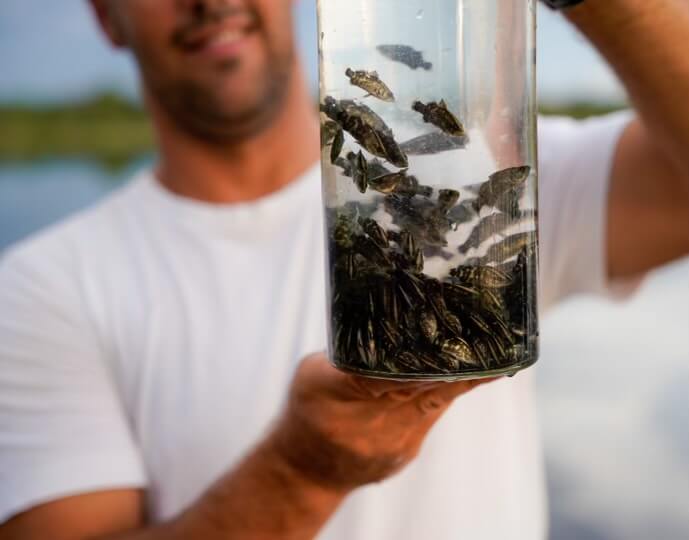
Some of the more highly-regarded rivers for barramundi include the lower Ord, Fitzroy and Keep, but there are countless systems through the Pilbara and Kimberley that hold them in varying numbers.
There are several charters that run extended trips into the Kimberley to target barra, and there also a number of specialised experienced barra fishing guides in northern WA.
